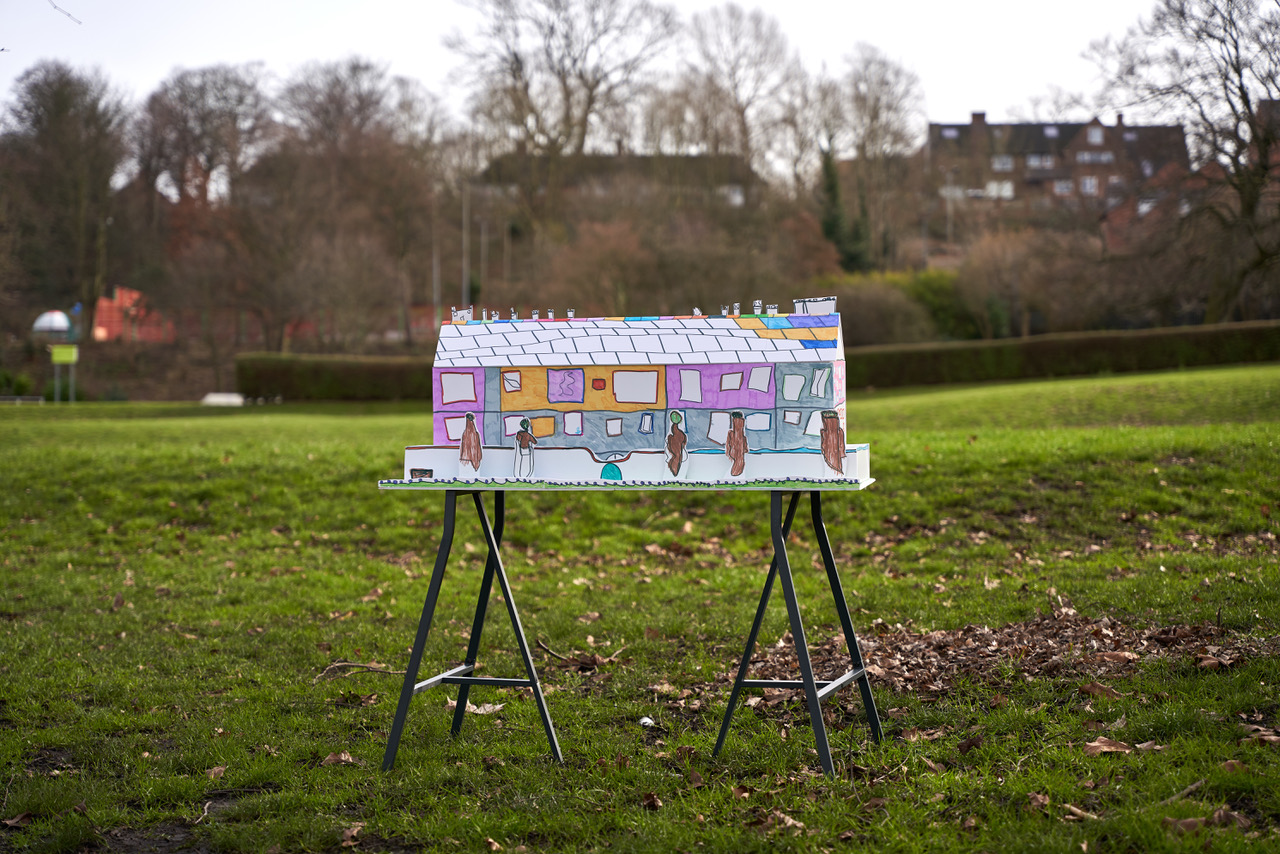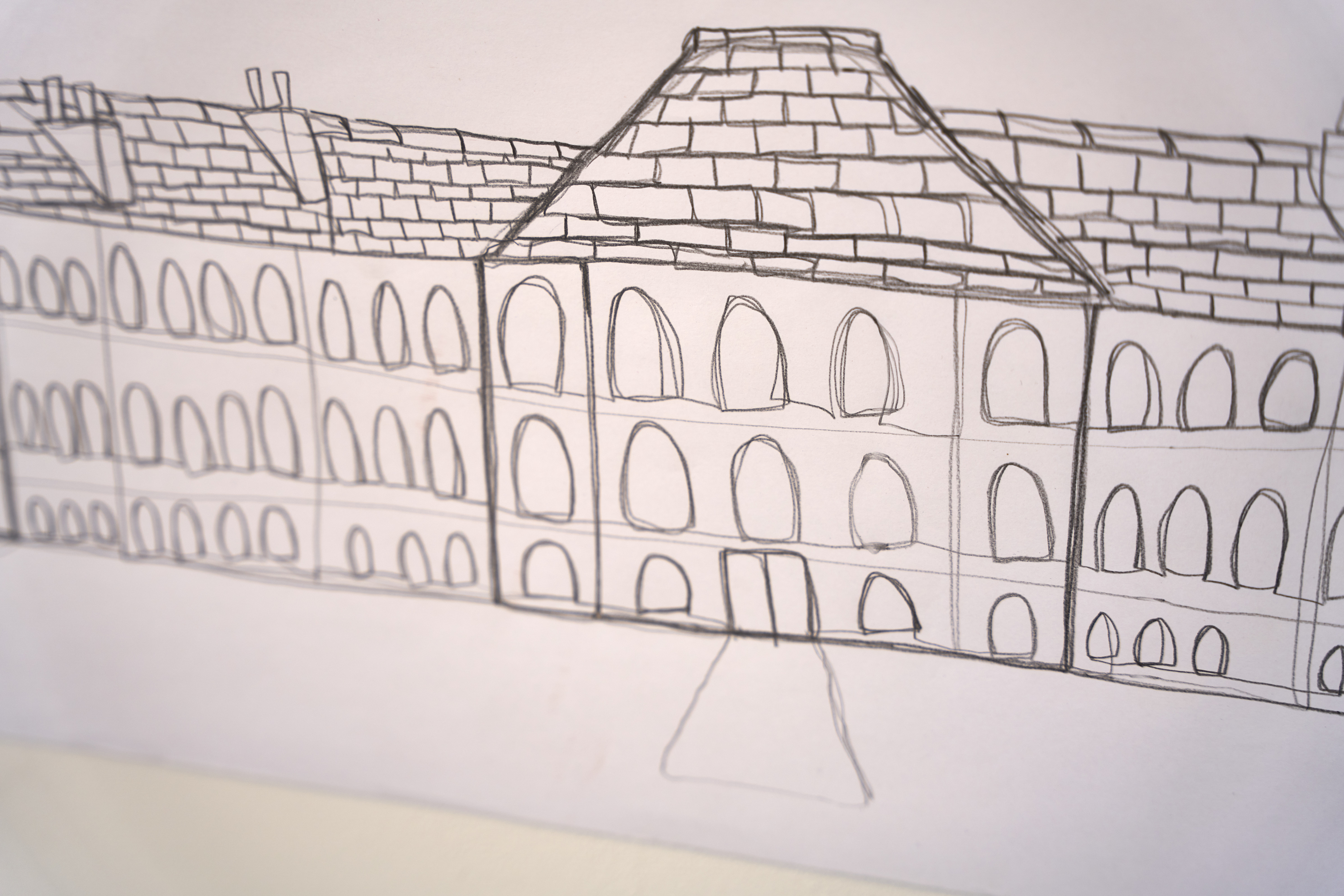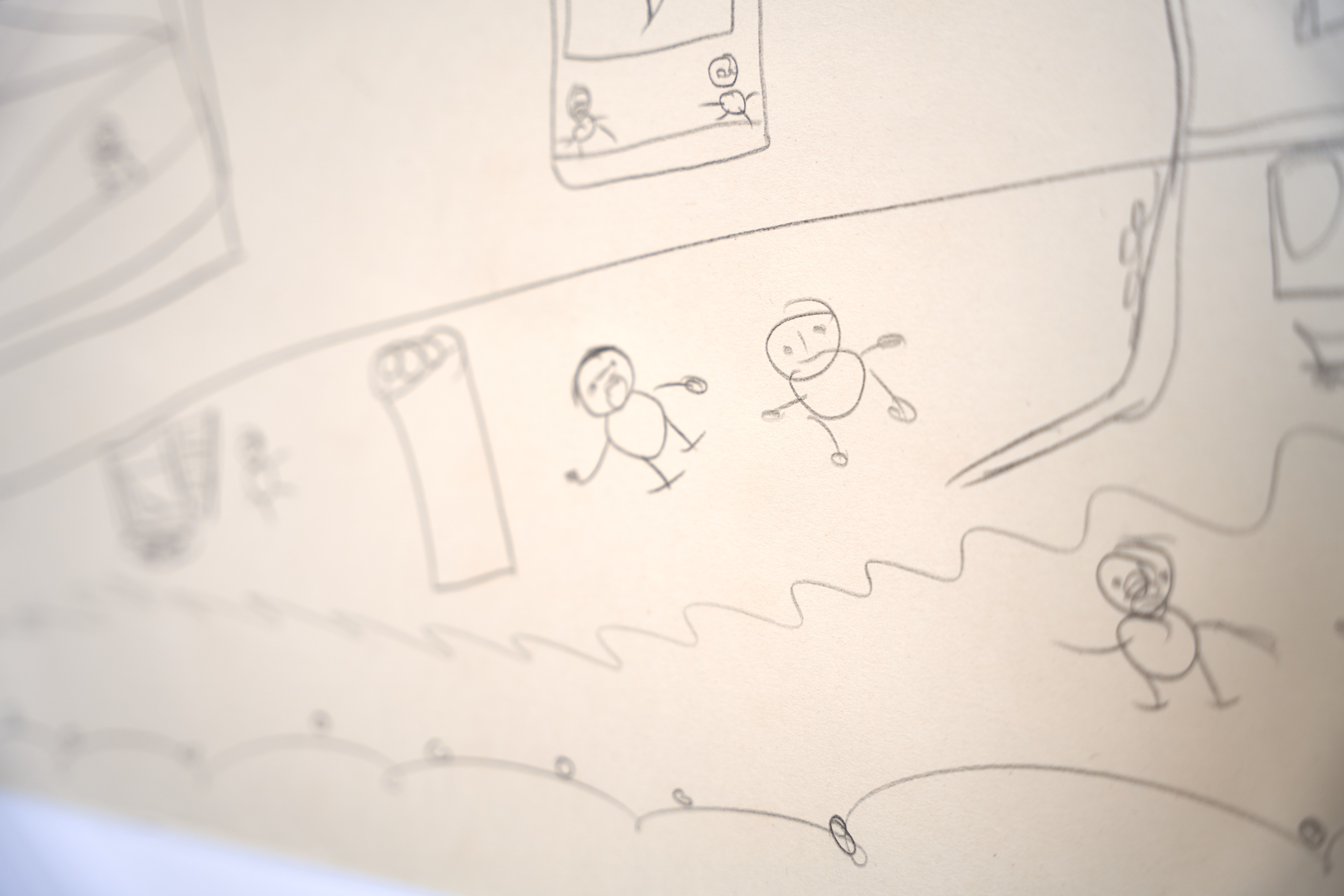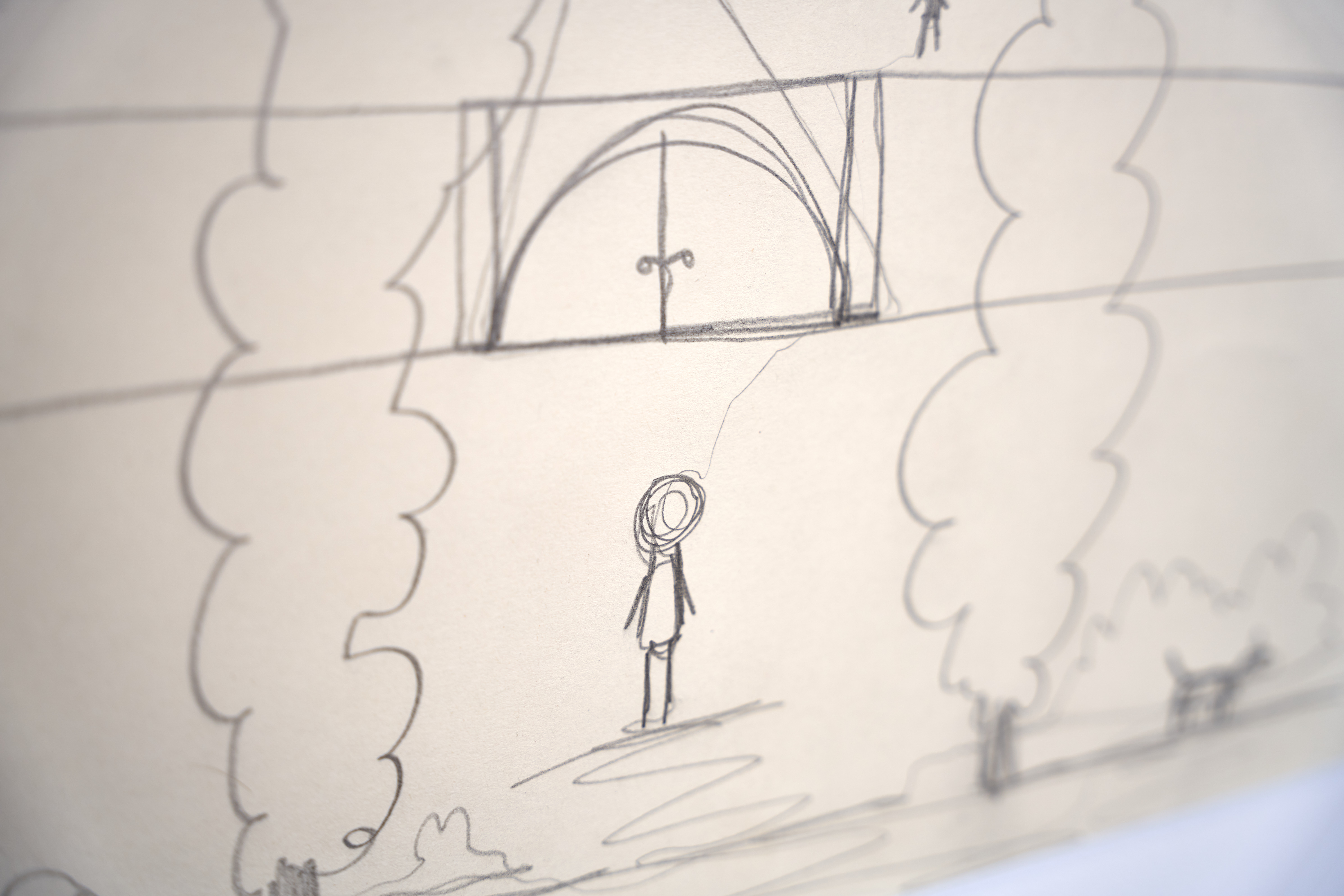PETER'S ASYLUM
BENJAMIN ROSTANCE
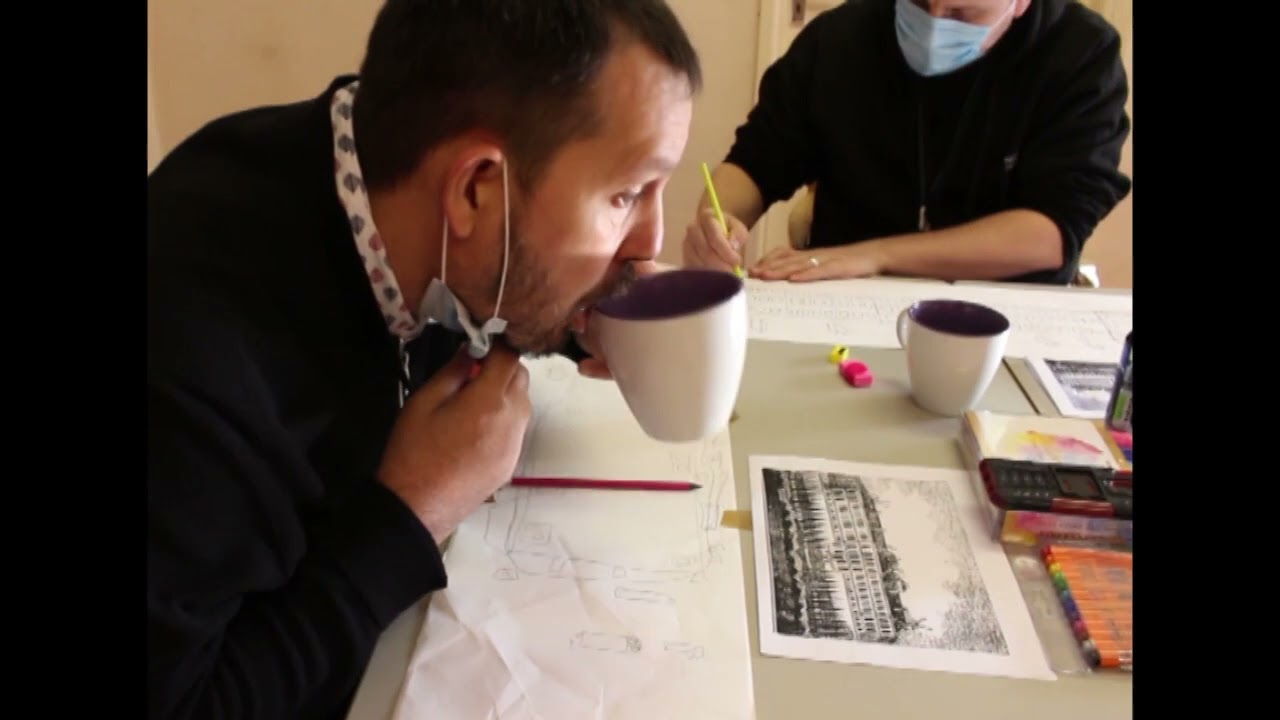
As part of the Nottingham Asylum Project, a collaborative piece of work, ‘Peter’s Asylum’, has been created by two local artists. Firstly, Benjamin Rostance proposed collaborating with an artist from the local community who identifies as having a learning disability and found the perfect candidate, Peter Gascoigne.
Over three days, various activities culminated in a workshop specifically designed to encourage and support Peter to produce a highly personal, visual interpretation of the Nottingham County Asylum. The activities complimented Peter’s support plans, implementing modern care practices as well as being influenced by Benjamin’s 15 years of experience of working in the social health care sector as a support worker and as a local fine artist.
The aim of the project was to effectively demonstrate how modern care work and techniques are used to support people with a learning disability in the modern age. Benjamin hopes that ‘Peter’s Asylum’ highlights and celebrates the progress made in the care sector when juxtaposed with the practices undertaken at the Nottingham County Asylum during the nineteenth century.
The project was supported by Sneinton Tenants Outreach Programme (STOP-TRA), a tenants and residents association run by local volunteers who run activities at King Edward Park and pavilion.
Benjamin documented further details regarding the outline, progression and summary of the workshops with Peter over the three days to give a thoughtful insight into the final work.
Day One:
-
Stage a take-over of the STOP-TRA annex building, situated in the heart of King Edwards Park. Collect natural artifacts from the grounds which we can use to decorate our workshop with and, also use in our art.
-
Record audio on a walk around the grounds. Experience the full grounds and soak up its scale and contents.
-
Look at archive research material lightly. Look at a drawing of the Nottingham County Asylum.
-
Noise making and recording session. What noises can we think of based on what we have seen in the grounds and the materials we have collected?
Day Two:
-
Assemble our first interpretation of what we think the building looks like as a whole. To do this, we have lots of different paper, found natural objects, have six kilograms of natural red clay, pens, pencils, charcoal, felt tip pens, watercolour paint pens and more.
-
We will read lots of words and short sentences from more pages of the research documents we have been given access to by BACKLIT Gallery and the other researchers. Can we imagine how the Asylum smelled? What did it sound like? What was it like to live in the asylum? Would we have been happy to live there? We will talk to each other about our ideas to help us think lots about the asylum as we draw and create.
-
Let’s eat! Today we will go to the allotment run by STOP-TRA in King Edwards park and choose vegetables to make a stew! Eating the same kinds of vegetables, grown in the same soil as the residents of the original Asylum might help us connect to them and their stories better and influence our drawings.
Day Three:
-
We have a full morning of drawing, painting, and making and use whatever we like to create big or small drawings of the asylum.
-
In the afternoon we will begin to build a big model out of foam board, using all the items we have collected including our favourite parts of all the drawings we have done so far. How will the asylum look? What will you decorate it with? How big will it be?
-
Once completed, we will show BACKLIT Gallery what we have managed to create.
Summary of the project.
Despite encountering difficulties that resulted in the project being adapted, we achieved most of our goals with Peter taking the challenges that he faced in his stride. He worked incredibly hard to continue forward with his drawings and model making and produced a much larger body of work than had originally been intended.
Due to additional planning as a result of coronavirus, the project started later than anticipated in Winter 2020. However, despite setbacks I worked intensely with Peter’s managers to ensure that his involvement in the project was fully risk assessed, beneficial for him to undertake, safe from the dangers of the coronavirus and most importantly in his best interest to complete his first major artist commission from a gallery. So, the project began with heaters on full blast, tea brewing in the pot and a box of biscuits. Peter took his seat and with an incredible amount of excitement and energy, the drawing began.
Peter engaged actively and with full concentration and was in full control of the times he arrived and left the project space. After two days, we took a good look at the work that had been produced and both of us were incredibly surprised and proud to have managed to produce so much in such an intense amount of time. Both of us felt it had been a massive success and a pleasure to take part in.
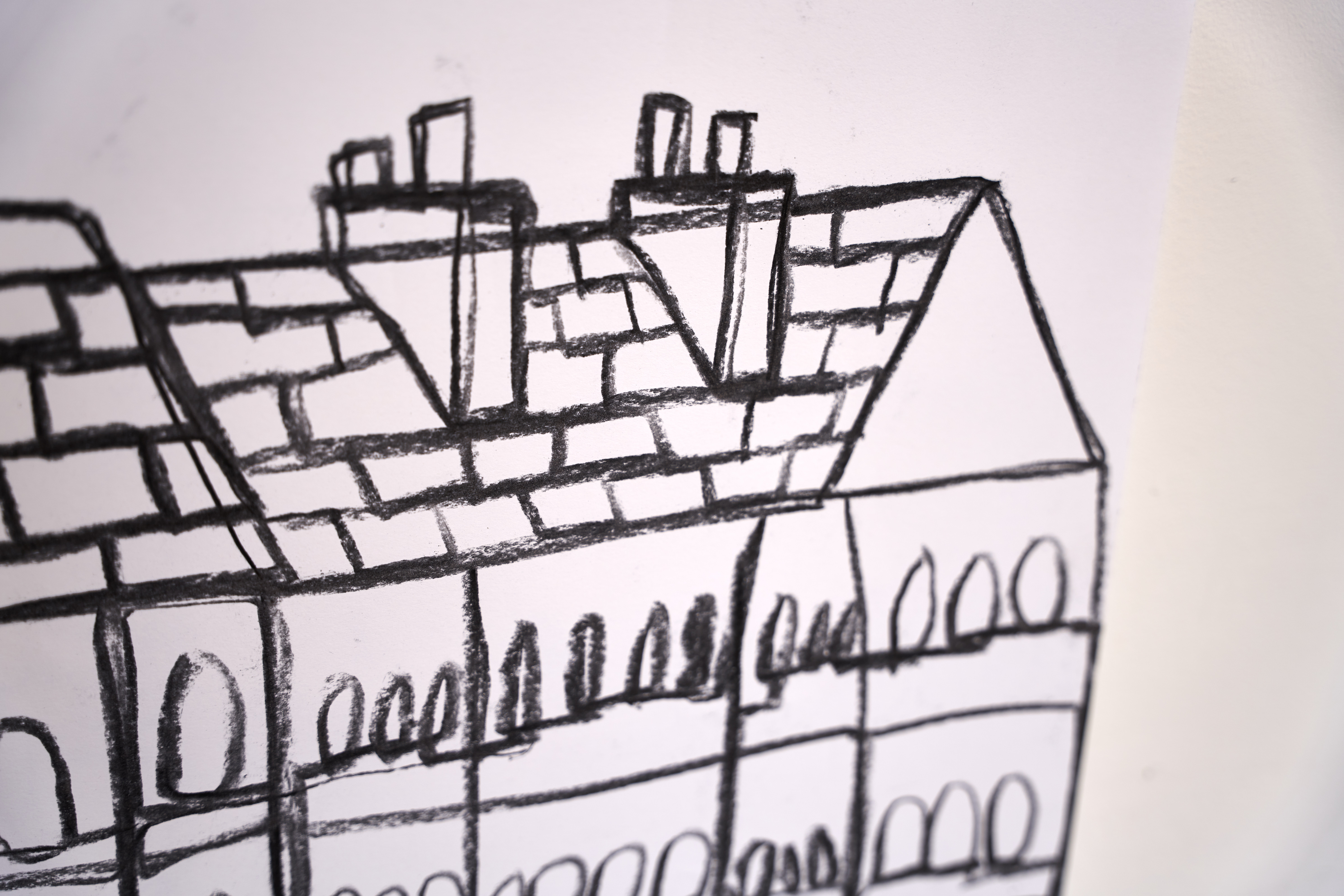
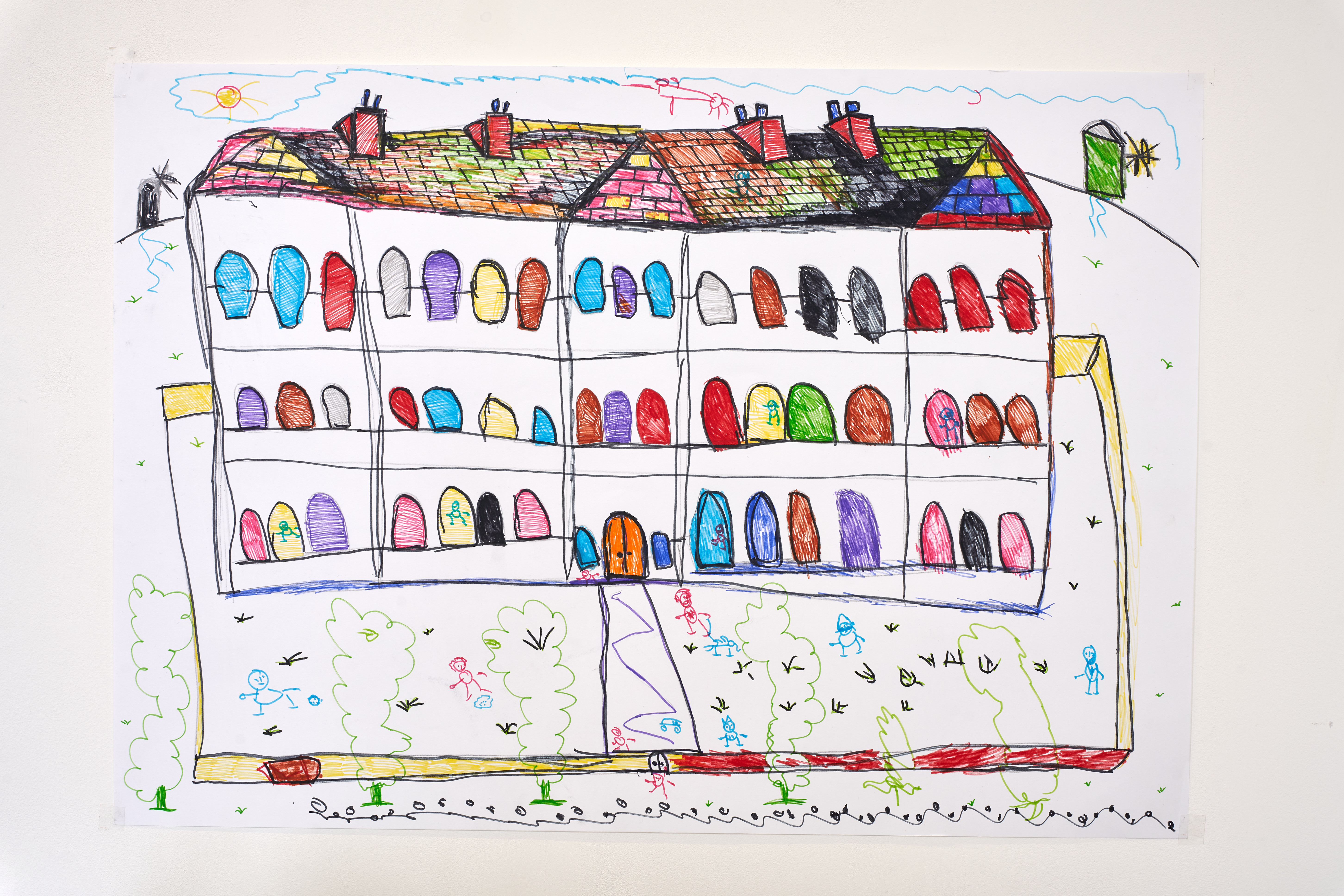
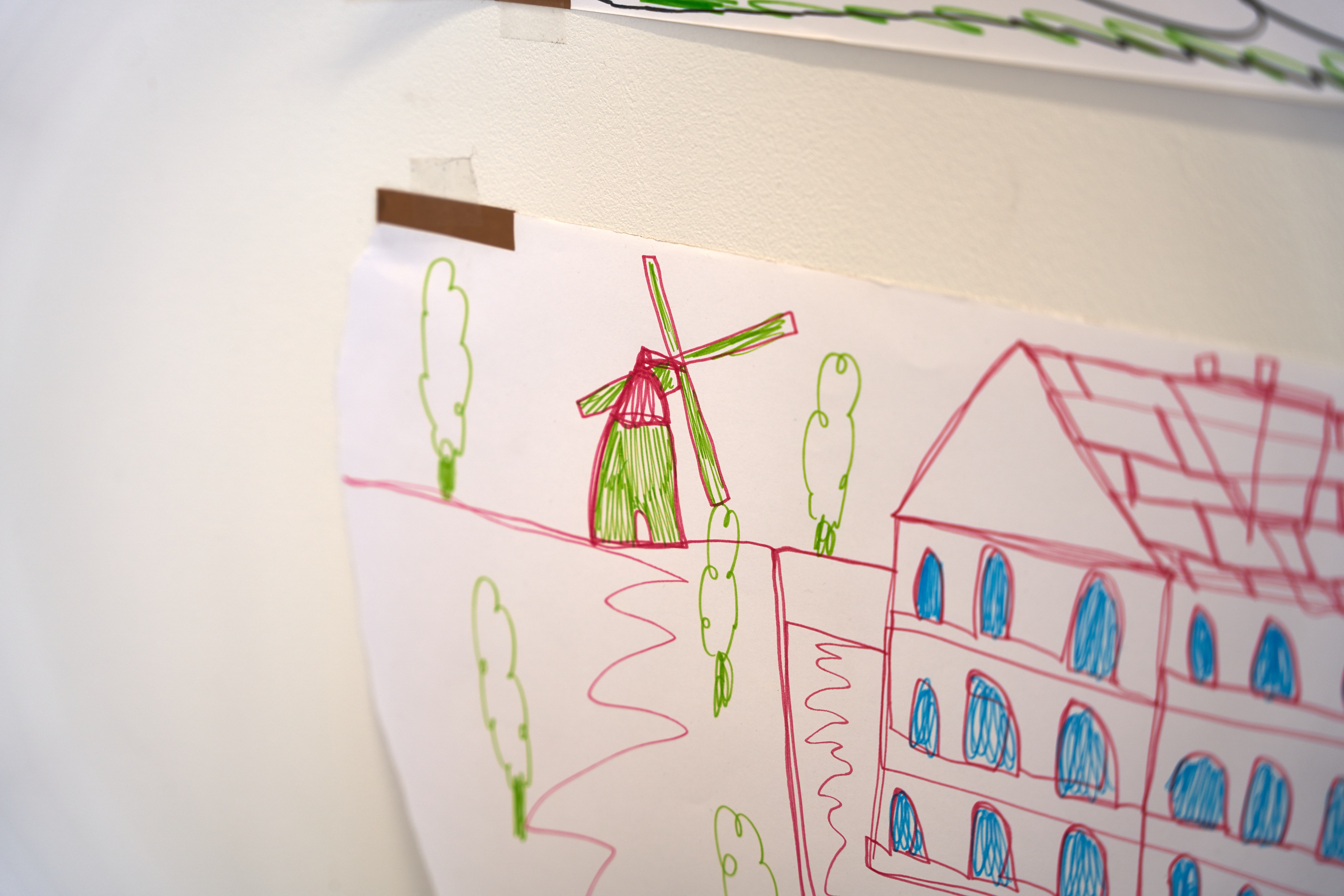
Project highlights:
Despite both of us reading from pages of the research, encountering some uncomfortable truths about the asylum and the people who may have lived within its walls, Peter still chose to interpret all this research in his own way. In ‘Peter’s asylum’ you can see a varied range of characters, each seeming to be doing something unique. Some playing games, opening windows, parents and pushchairs, an aeroplane and even a dog managed to find their way into Peter’s vision of what life at the Nottingham County Asylum was like. This wonderful depiction of life is such a refreshing and reassuring symbol of positivity and hope.
Finally, when everything had been wrapped up and we were back at his house having a cup of tea, I asked Peter what his favorite part of the project had been. Peter characteristically put his head in his hands, as he often does when he is entering deep thought, took a deep breath, paused and then said,“All of it”.
Meet the artists:
Peter Gascoigne
Peter has lived locally to the grounds of the Nottingham County Asylum since he was born and has family ties to the local area to this day. Peter’s family are incredibly supportive of him and his interest in being creative, especially his love of felt tip pens and colouring books. As a young man Peter volunteered at the Stonebridge City Farm, which is local to both King Edwards Park and BACKLIT Gallery. This project is Peter’s first commission from a gallery however has collaborated with Benjamin on several projects in the past.
Peter lives in Nottinghamshire and has a dedicated staff team, of which Benjamin is included, his team support him 24 hours a day to live as independently as possible.
Benjamin Rostance
Benjamin is a Nottingham born and based, working class artist who identifies as having a long-term mental health disability. His art practice attempts to open conversations concerning trauma and recovery from developmental trauma.
Benjamin has dedicated nearly half of his life to the social healthcare sector and has supported Peter Gascoigne at his home for five years. Benjamin and Peter have collaborated on many projects that are often aimed at bringing residents at Peter’s home together for events such as film nights, bingo and parties.
Benjamin continues to create art alongside his job as a support worker in the health and social care sector and hopes to be able to work professionally with people who identify with having a learning disability in the future.
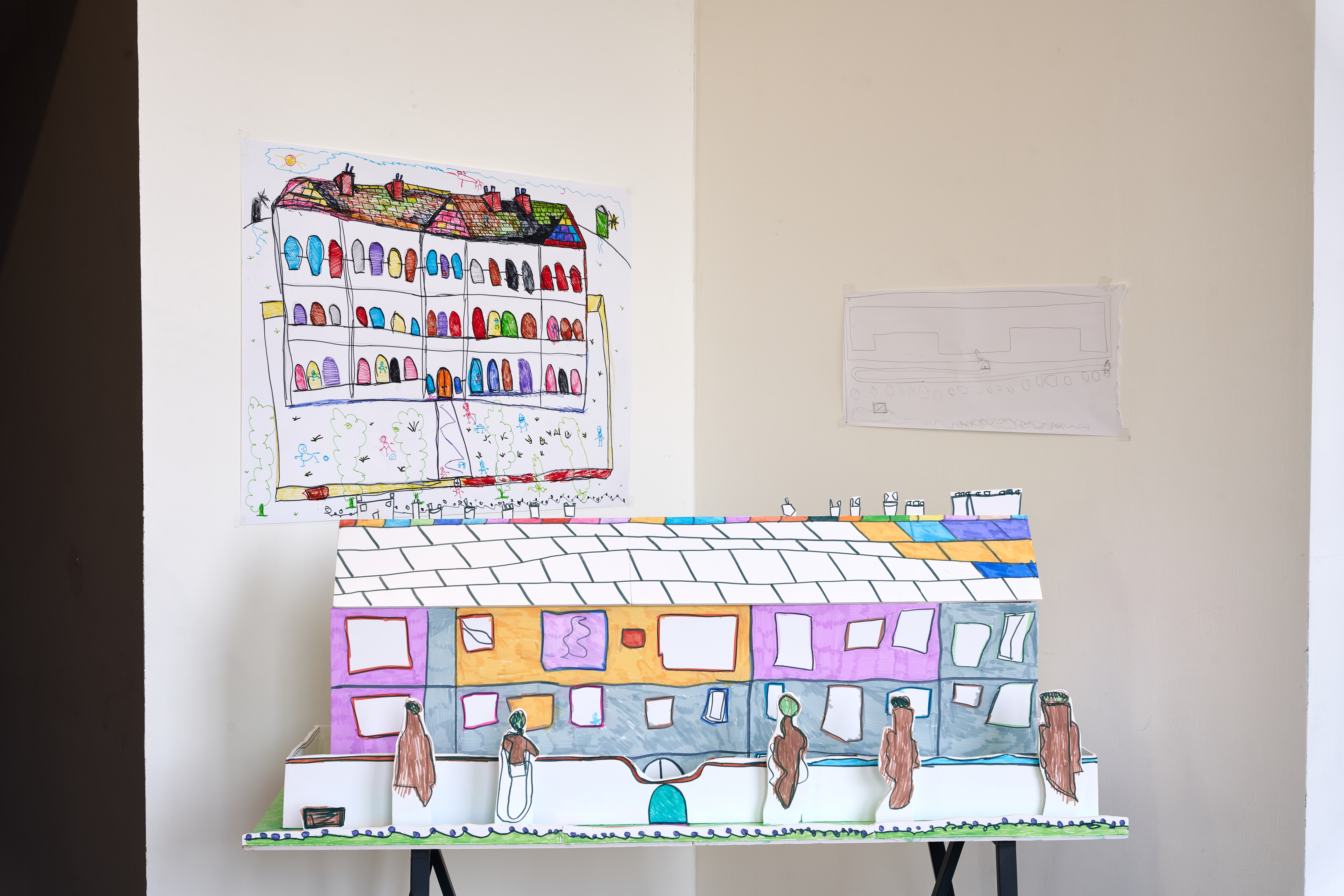
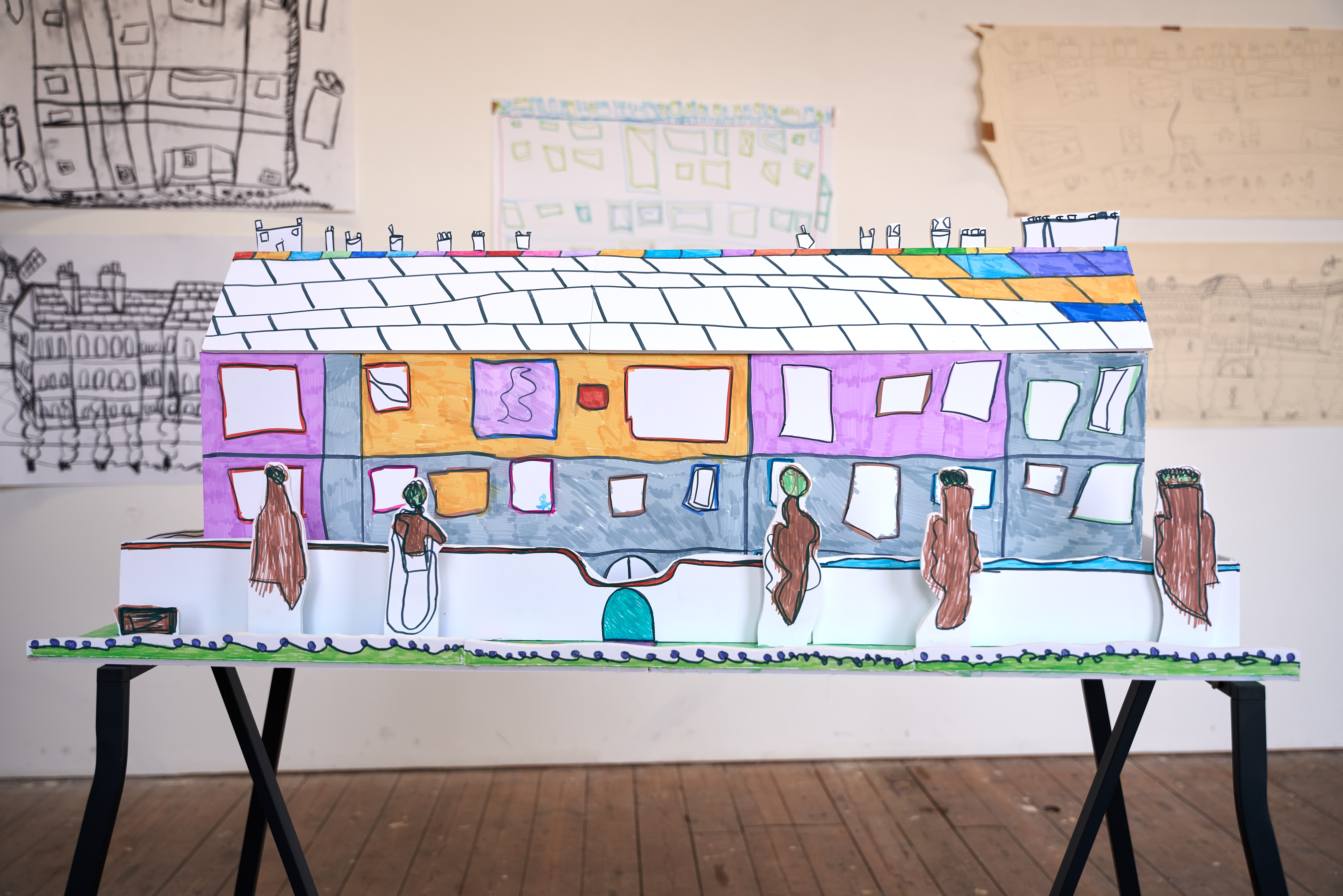
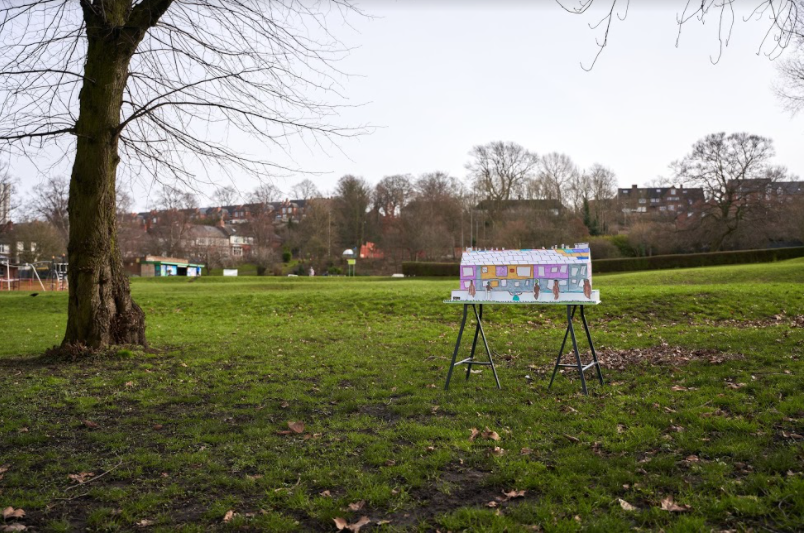
Credits: Photographer – Underhill Creative @underhillcreative
